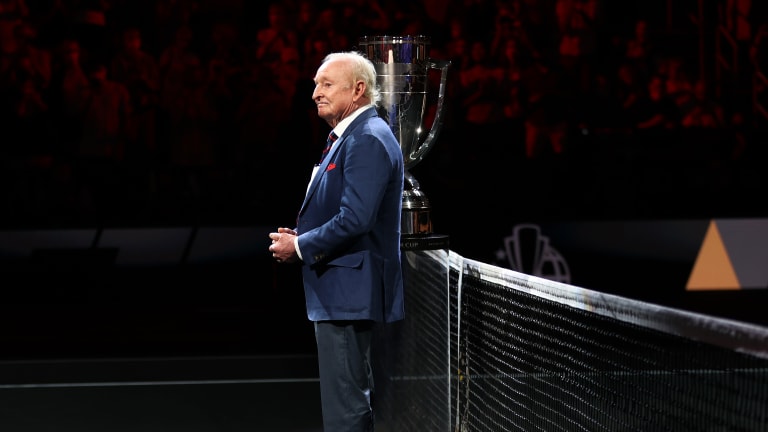Laver Cup
Rod Laver turns 85 with the tours in Canada, and his namesake event heading there soon
By Aug 09, 2023Laver Cup
Carlos Alcaraz, Taylor Fritz commit to play 2026 Laver Cup in London
By Nov 18, 2025Laver Cup
Taylor Fritz, Alex de Minaur lead Team World to third Laver Cup title
By Sep 22, 2025Laver Cup
Full-flight Fonseca, 'Rocket' Rod and more animated Laver Cup highlights
By Sep 22, 2025Laver Cup
“Today is a new day”: Carlos Alcaraz puts Team Europe in position for first Laver Cup tie
By Sep 22, 2025Laver Cup
“Don’t jinx anything!” Casper Ruud, Carlos Alcaraz tee up repeat Laver Cup comeback
By Sep 21, 2025Laver Cup
Laver Cup Sunday: Can Team World clinch a major upset over Team Europe?
By Sep 21, 2025Laver Cup
Roger Federer, Steph Curry take part in Laver Cup coin toss
By Sep 21, 2025Laver Cup
Where does the Laver Cup go next, according to Roger Federer?
By Sep 21, 2025Laver Cup
Alex de Minaur rises to team occasion once more with Laver Cup win
By Sep 21, 2025Rod Laver turns 85 with the tours in Canada, and his namesake event heading there soon
Fifty years after a grand Davis Cup moment, the Aussie’s appreciation of team play continues.
Published Aug 09, 2023
Advertising
Advertising

Roger Federer and his management team created the Laver Cup to honor the incredible Australian.
© Getty Images for Laver Cup